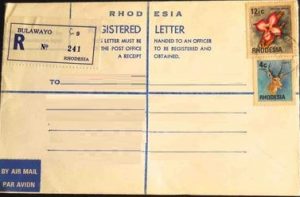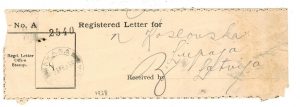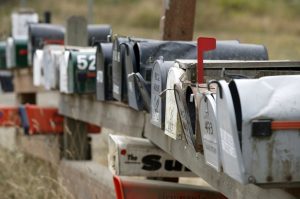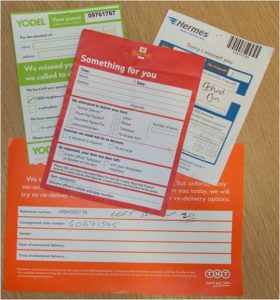 As a child I have three distinct memories of what it was like to live semi rurally.
As a child I have three distinct memories of what it was like to live semi rurally.
Although we didn’t actually live in the countryside, we did live a number of kilometers from the city in a quiet street without street lights that people often found hard to find.
In those days there were no personal GPS, no personal computers, no mobile phones and very few people actually had maps – in fact if the police came to investigate a petty incident they would often come on a bicycle.
Any street maps that did exist were hardly usable because they were never up to date and carried insufficient detail. If you expected to get visitors you would have to provide them with a hand drawn map. Distances were not as important as landmarks and the right number of left and right turns.
Three distinctive services remain firmly embedded in my memory, the early morning delivery of fresh bottled milk in glass bottles with foil lids from the DMB (Dairy Marketing Board), fresh bread deliveries mid morning by Lobel’s Bakery and postal deliveries by the Post Office.
Living in a big city we have the luxury of Royal Mail deliveries and occasional visits from other delivery services like FEDEX, UPS, Hermes, Whistl, the supermarket or an independent carrier working for someone like Amazon.
You could argue that the franchise of the Post Office and the Royal Mail is all but completely gone but I think we do somewhat underestimate just how much of the market they still occupy in the UK at least. In the rural areas as least I feel confident that they still carry the lion’s share of the delivery market.
 Getting a letter in the post was always a delight, as a child I was a prolific letter writer and had many pen pals around the world courtesy of the Big Blue Marble TV program that screened on the local gogglebox (TV). Writing and receiving a letter and going through the ritual of the paper the envelope and the stamps was something distinctive, something that is perhaps out of time with contemporary communication but still without a doubt something valuable.
Getting a letter in the post was always a delight, as a child I was a prolific letter writer and had many pen pals around the world courtesy of the Big Blue Marble TV program that screened on the local gogglebox (TV). Writing and receiving a letter and going through the ritual of the paper the envelope and the stamps was something distinctive, something that is perhaps out of time with contemporary communication but still without a doubt something valuable.
A couple of things I distinctly remember from those days also, was the fact that occasionally we would get two or three official pieces of paper in the letterbox. A white slip denoting a registered item, another slip denoting postage due and another slip indicating a package too large for the letter carrier to carry.
Reflecting on the task of the “postboy” as we called him, it was a tough route. I am not sure how many houses or streets he was tasked with deliveries to, but it was uphill all the way on his bike laden with letters and downhill at the end of all his deliveries.
He rode a pushbike and occasionally would get lapped by the telegram boy who delivered at a different cadence.
When you received those little slips the only option was a journey to the post office, four kilometers away. It was a journey mostly downhill but without a car your only way to get there was bicycle or foot. You could wait until a time that was convenient to go with a parent but that was like waiting for ice to melt and not very satisfying.
 Every moment without that thing in the mail was a excruciating. Usually you would have almost no other reason to go the Post Office because it was in a sleeping little suburban shopping center that comprise a petrol (gas) station, two cafes (corner store general dealers) that competed with each other, a chemist, a hair salon, a bottle store (liquor outlet), a stationery shop, a haberdashery cum sewing shop, a florist, a shoe store, a butchery, a general dealer (Gordon’s Supermarket) two banks, a building society and a hardware store. Quite a lot I suppose, but not of much interest to a tween.
Every moment without that thing in the mail was a excruciating. Usually you would have almost no other reason to go the Post Office because it was in a sleeping little suburban shopping center that comprise a petrol (gas) station, two cafes (corner store general dealers) that competed with each other, a chemist, a hair salon, a bottle store (liquor outlet), a stationery shop, a haberdashery cum sewing shop, a florist, a shoe store, a butchery, a general dealer (Gordon’s Supermarket) two banks, a building society and a hardware store. Quite a lot I suppose, but not of much interest to a tween.
The post office had defined hours. Opening at 8 or 9 and closing at lunch time, reopening after lunch and closing at 4 or 4:30. On Wednesdays I recall it worked a shorter day. Although there were three counters, only one counter serviced registered articles and parcels, counter number three. It was by far the busiest of the counters also. The Post Office was where you could do many things.
Pay some bills for utilities, pay for your TV and Radio license, send a letter or ship a parcel, buy revenue or tax stamps as well as regular postage stamps. You could buy money orders, send a telegram and even make a phone call. For the elderly you could collect your pension there. It would be true to say that in some towns the Post Office was the hub of activity. Although no one really understood why, the PTC as it was known, was where all activities related to the Posts and Telecommunications would be conducted. It was a very important functioning operation.
In later years for many reasons, it failed in my home country, due to corruption, inefficiency and probably a raft of other reasons, sad really. The interesting thing is that the Post Office continues to be an important institution in many parts of the world and remains a solid operational mainstay in many first world countries in particular.
 In the US for example I was amazed to find that at one point postal deliveries were twice a day and that you could buy postage stamps from a cash withdrawal machine (ATM); I was also amazed that the mail carrier drove a right hand drive vehicle, street mailboxes were clustered like they are at condominiums or blocks of flats and the letter carrier delivered parcels and would receive pre-stamped letters for delivery. It was in some respects like a mobile post office.
In the US for example I was amazed to find that at one point postal deliveries were twice a day and that you could buy postage stamps from a cash withdrawal machine (ATM); I was also amazed that the mail carrier drove a right hand drive vehicle, street mailboxes were clustered like they are at condominiums or blocks of flats and the letter carrier delivered parcels and would receive pre-stamped letters for delivery. It was in some respects like a mobile post office.
In the UK you can often post a letter today and receive it tomorrow!
Now I come to the confusing part, the Royal Mail and the Post Office in the UK seem to have lost their way a little having abandoned the concept of the GPO and although the Post Office now offers even more services their separateness from the Royal Mail is odd.
It could be that they always were considered separate functions but today you go to a customer service point to collect certain mail items but you cannot do anything there except collect something.
If you don’t have the postage or you need a receipt or proof of posting, the Royal Mail Customer Service Point cannot help you they accept nothing except under very particular circumstances.
 Certain mail items are to be collected from your neighborhood Post Office but you
Certain mail items are to be collected from your neighborhood Post Office but you
can also collect items from other services like Parcelforce which is the delivery arm of the Royal Mail Ltd group -in 1990 Royal Mail Parcels was rebranded as Parcelforce.
It can be very confusing and in the end one cannot help wondering whether all this new optimization and complexity hasn’t simply destroyed elements of customer service for someone who simply wants to collect a parcel and post a letter or send another parcel.